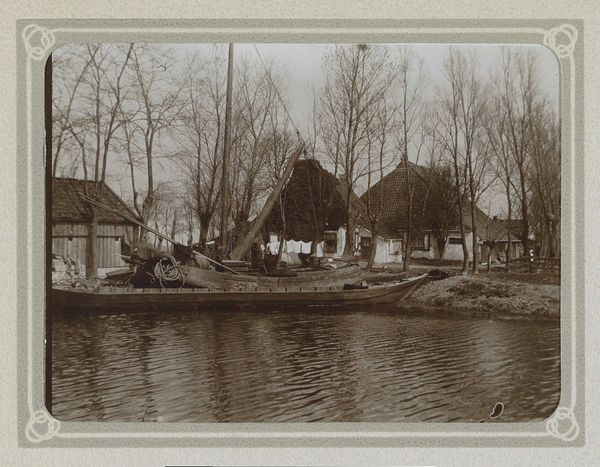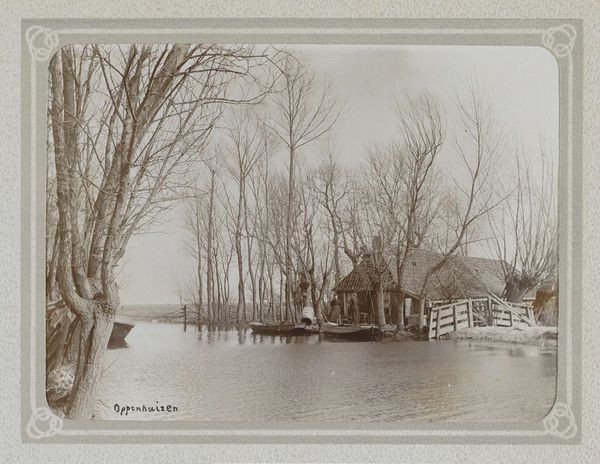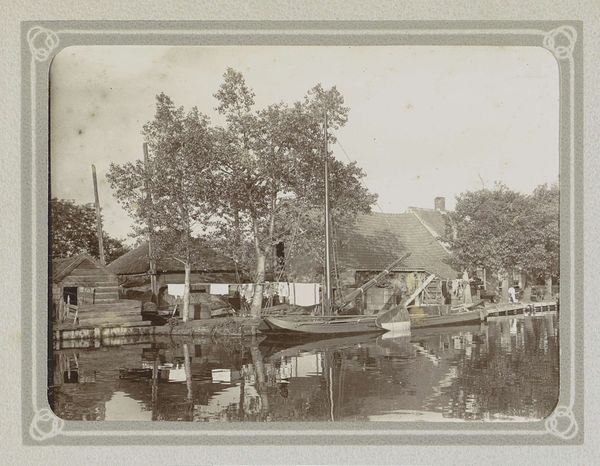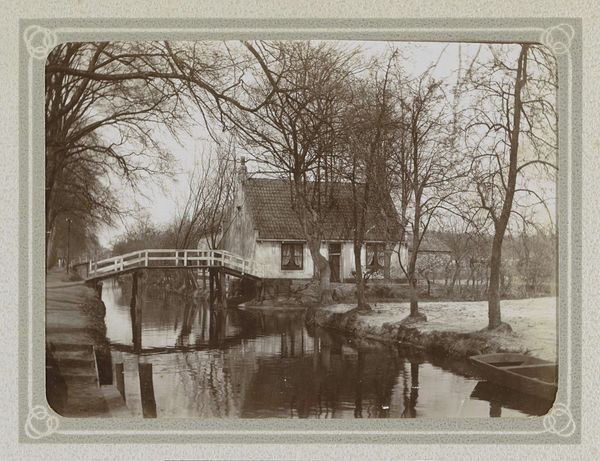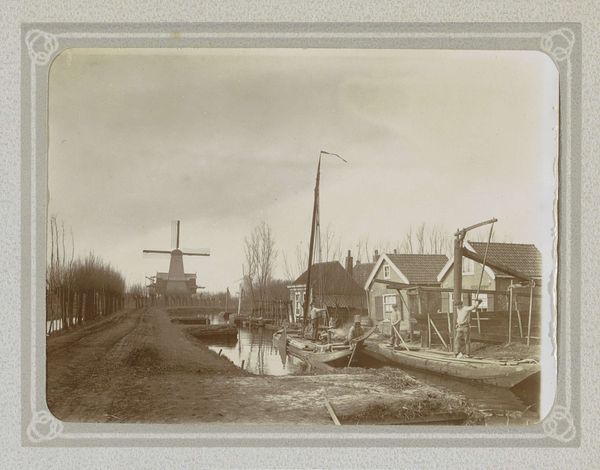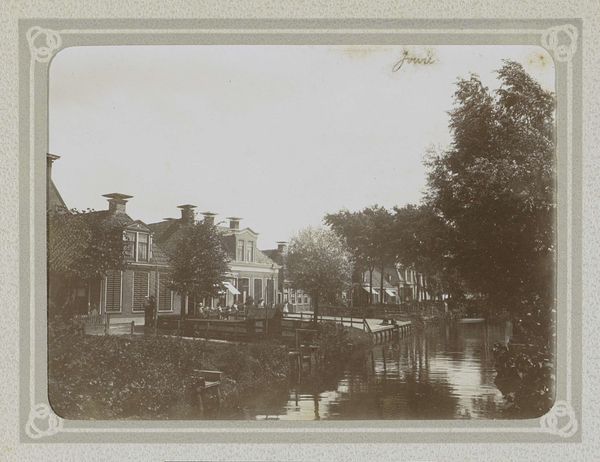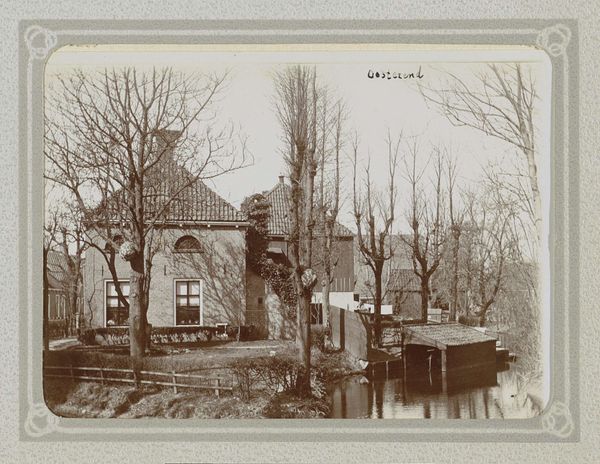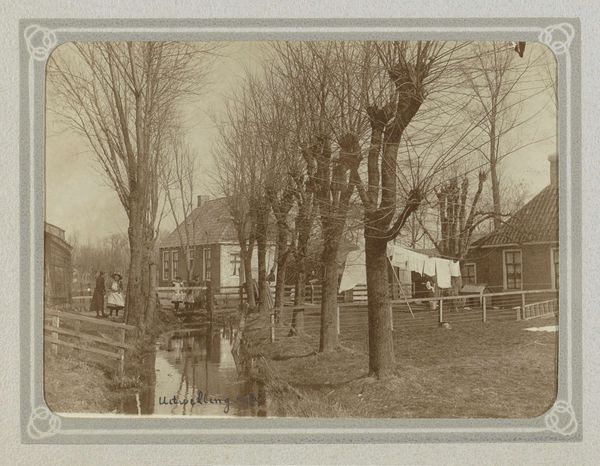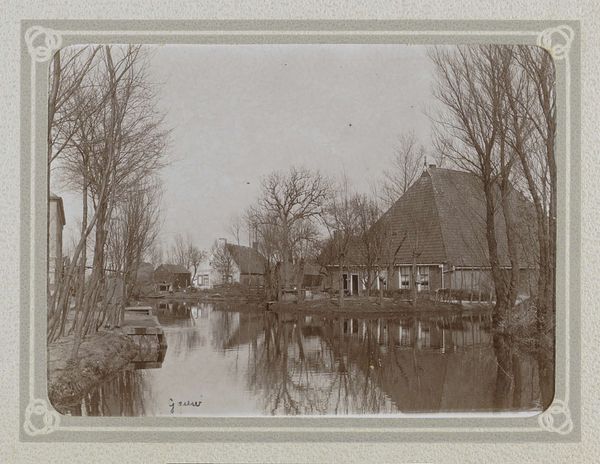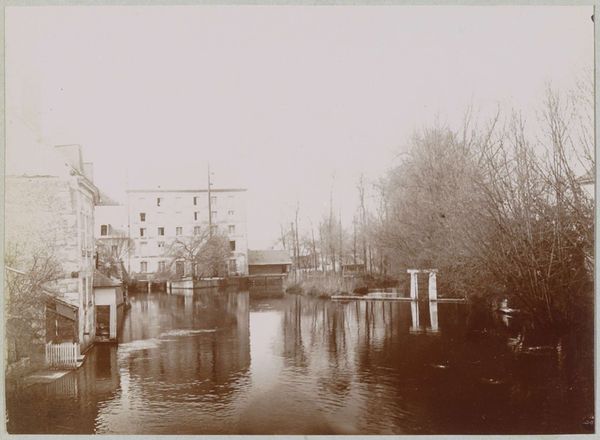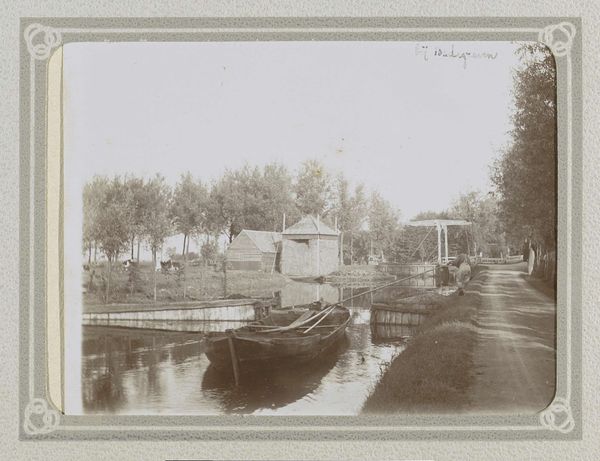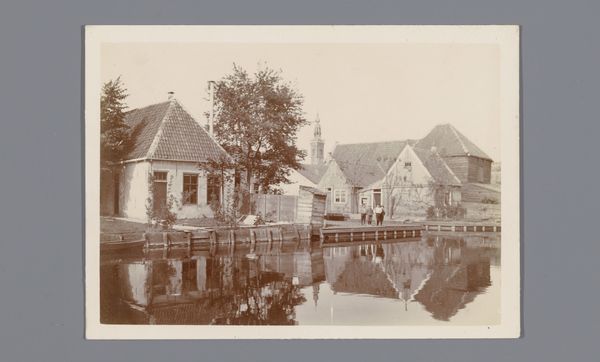
Huizen, schuren, een brug met twee kinderen en een sloot in Goënga c. 1905 - 1907
0:00
0:00
photography
#
architectural landscape
#
dutch-golden-age
#
landscape
#
historic architecture
#
traditional architecture
#
photography
#
cityscape
#
realism
#
historical building
#
building
Dimensions: height 81 mm, width 110 mm
Copyright: Rijks Museum: Open Domain
Editor: This photograph, "Huizen, schuren, een brug met twee kinderen en een sloot in Goënga," was taken by Folkert Idzes de Jong around 1905-1907. It's quite a serene landscape. What really catches my eye is the composition; the way the buildings and the water create a mirroring effect. How do you read this image? Curator: As a materialist, I’m immediately drawn to the socio-economic implications embedded within this image. Consider the materials used in the construction of these buildings – wood, thatch. They speak volumes about the available resources and the local labor involved in their construction. What can you infer about the community from their dwellings? Editor: I guess it suggests a reliance on readily available, local materials. Possibly a rural, working-class community, dependent on the waterways? Curator: Precisely. The very act of photographing this scene, rather than painting it, is also a telling choice. Photography was becoming increasingly accessible, yet it still required resources and technical knowledge. This photograph thus provides insight into class and changing production practices. Does the presence of the bridge spark any thoughts? Editor: It implies connection and trade. The fact that it’s a rather simple bridge further speaks to the community's resources. It seems very utilitarian. Curator: Exactly. Even the children on the bridge suggest a social fabric, the next generation integrated into the landscape of production and material life. We can see how materials and class structure create art meaning, a departure from idealized aesthetic experience. Editor: That's a fascinating point of view. I never considered photography itself as a form of material production that provides such rich sociological insights. It really gives a completely different depth to understanding this landscape.
Comments
No comments
Be the first to comment and join the conversation on the ultimate creative platform.
